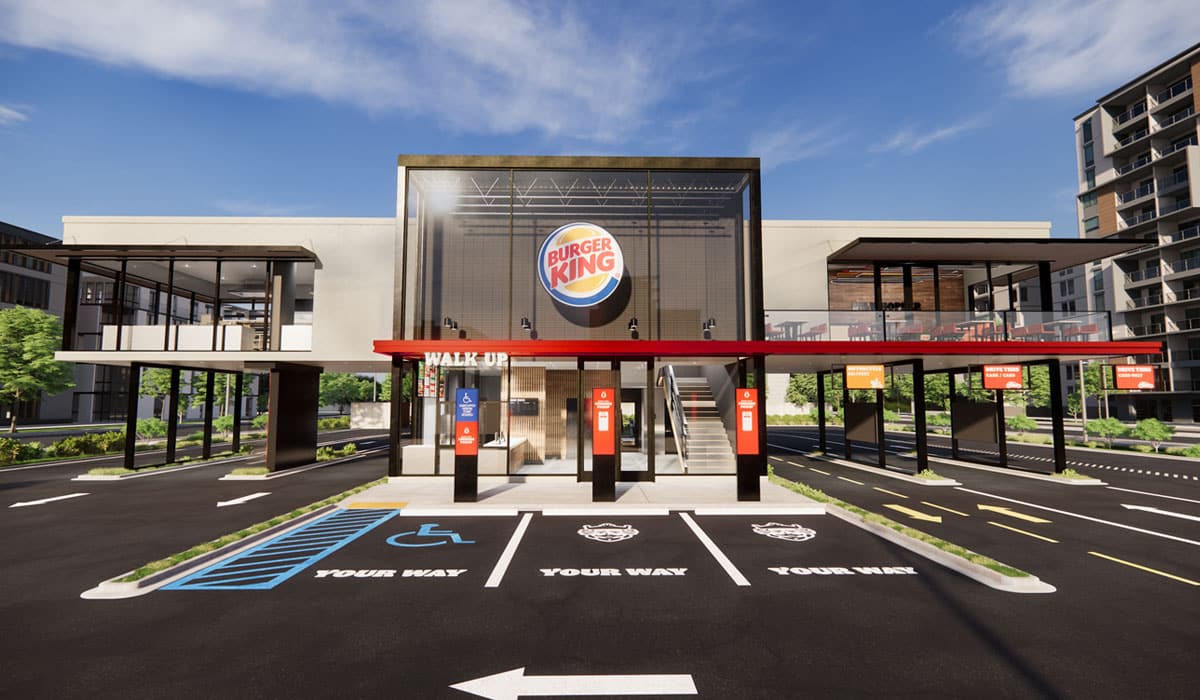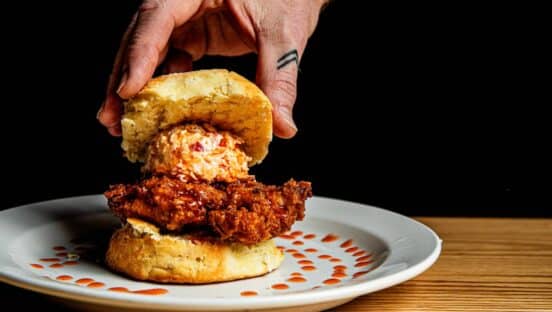While an unfortunate reality, much of the chain growth after COVID-19 will take shape in former independent restaurants. It’s something public brands have addressed in earnings reports from the start. Closure estimates are all over the map, but there’s a pretty bankable consensus on where the greatest disruption will occur.
Financial services company Rabobank predicted 50,000–60,000 eventual permanent closures in the independent restaurant sector, or 15–20 percent of the entire group. The National Restaurant Association guided 100,000 shutterings total (it didn’t break down by sector). An August survey from the James Beard Foundation, in collaboration with the Independent Restaurant Coalition, suggested just 66 percent of independent bars and restaurants believed they’d survive through October without additional federal aid (which has yet to come).
Two months earlier, the Coalition said 85 percent of independent restaurants could permanently close by the end of 2020—crumbling a segment that generates about $760 billion in sales and employs 11 million people.
From Starbucks to Dunkin’ to Pizza Hut and Burger King, plenty of large chains expect to accelerate closures by the hundreds. Yet they’re set on relocating and repositioning, not vanishing. Starbucks, for example, is transforming assets with more drive thrus, suburban, and pickup-dedicated venues. Dunkin’ has closed 687 domestic locations year-to-date, but 447 were Speedway self-service kiosks.
On the full-service side, IHOP plans to shutter as many as 100 venues in the next six months. On point, brand president Jay Johns said the family-dining icon is confident it can eventually replace these units with better-performing stores—locations with volumes closer to IHOP’s pre-COVID AUV of about $1.9 million.
So the pandemic closure discussion is two very different debates, regardless of how it shakes out numbers wise.
Here’s an early October observation from Domino’s CEO Ritch Allison: “We certainly look at 2021 and forward as an opportunity to continue to gain share in the pizza category,” he said. “And I’ll preface it by saying, none of us want to see independent pizza restaurants close due to the pandemic. We’d love to compete and fight it out every day, but we also love to go out and eat at independent restaurants as well. And I feel for the challenges that a lot of these independent restaurants are going through and their proprietors that have put their livelihoods into those businesses.”
“But the reality is, if you were operating an independent pizza restaurant with a significant amount of your business dine in, and if you were relying on beverage mix and alcohol to bring a good bit of margin to your business, if that business has now been shifted to where you have to do most of it off-premises and if most of that has to come by paying very high fees to third-party aggregators, it’s just a really difficult operating environment,” he added.
Allison admitted nobody knows where this will land. “But I do believe that the shakeout and the turmoil is going to create opportunity for us to further take share and continue to grow.”
Allison’s sentiment is one widely shared by well-capitalized brands. And it could pick up soon, along with M&A activity. Per a study from AlixPartners released last week, more than 60 percent of full-service restaurants are reporting negative EBITDA levels—and at current run-rates that could grow to 80 percent or more by 2021.
Since 2019, debt in the sit-down restaurant segment is up 15.7 percent. Compared with the start of the Great Recession, it’s risen nearly 50 percent. “Restaurants—especially in the [full-service] segment—are in dire need of a significant turnaround in operating performance, and/or a series of debt restructurings in the coming months,” the company said.
To dress this all down, the restaurant landscape is going to look rather different in the next year or so. And that’s probably a significant understatement.

A brand with a different goal
James Walker, SVP of Nathan’s Famous, recognized opportunity out of COVID as countless brands have. One of America’s oldest chains and most recognizable retail lines, started as a nickel hot dog stand in 1916 in Coney Island, New York, Nathan’s has ample equity to drop into any market in America and attract consumers.
And so the ghost kitchen rage came calling. Nathan’s has three main partners—Franklin Junction, REEF, and Kitopi. But the fastest-growing piece, Walker says, is the independent operator. Unlike the real estate wait-and-see game, though, this isn’t about flooding venues left behind. “We want to strengthen the independents, not take their spaces,” he says.
A few weeks ago, Nathan’s began actively recruiting for independent restaurant partners, blasting emails through industry publications and reaching out across its channels. The goal was to find operators with existing restaurants, primarily in metropolitan areas where Nathan’s already appreciates distribution. The brand asked for a base requirement in kitchen equipment from independents. But that’s not often a setback given its low-complexity menu.
Walker says the response out of the gate was robust, quantitatively and qualitatively. “… the phone is ringing. We’re getting emails. There’s a lot of interest in people just because of the strength of the brand name,” he says.
Interest has come from caterers, large sit-down restaurants, and everything in-between. How it works is Nathan’s ghost kitchen sets up shop inside the restaurant, with the independent’s personnel preparing and executing the menu. “And the revenue is theirs,” Walker says. “They pay us a commission off of the sales. And the entire program is designed to be very CapEx light.”
Truthfully, the investment is rather unique to the sector. If an independent already has the existing equipment, which most do, you’re talking far less than any franchise on the market. This makes sense considering it’s not positioned as a franchise. It’s more a utilization of an independent’s kitchen facility.
Yet here’s the real headliner: All in, operators are looking at $5,000 or less to get up and running, Walker says.
“That’s a number that gets people excited,” he notes.
It’s proving a mutual opportunity, too. It helps an independent pay their rent, lease, and other expenses. It keeps the lights on and offers kitchen crews and management targets to drive revenue, Walker says. In some situations, it simply gives independent restaurant employees something to do, period, in light of significantly depressed dine-in traffic. It helps restaurateurs keep staff on board.
“I really like this because I feel it’s good for everybody involved, include the customer,” Walker adds.
Since Walker joined Nathan’s from Subway last May, he’s spearheaded menu innovation centered on elevating three fresh pillars. Today, you have hots dogs and fries, New York Heroes, burgers and shakes, and a hand-battered chicken program. All of these were concepted from a New York state of mind, Walker says.
Or put another way, Nathan’s remained hyper vigilant that its brand promise was executed and executable at scale. So these activations were all designed to be easy operationally.
In turn, Nathan’s can launch ghost kitchens in a matter of weeks from initial contact, in some cases. Walker says more debut every week. “My goal would be to get a significant number launched by the end of this calendar year,” he says. “So what that number ultimately turns out to be, it would be hard for me to guesstimate, and we’re also trying to do this in a strategic fashion.”
Nathan’s wants its ghost kitchen models to endure long after COVID buzz fizzles.
“It’s a little bit more than just we get a call and we roll this out. We try to be really strategic and make sure this is good for Nathan’s as a brand, good for the independent, and good for ultimately the customer, which I think is what always matters most,” Walker says.


When things return to normal, whatever that means (Walker calls it “post vaccine”), Nathan’s still believes independents, as well the larger groups, will want to grow with the brand. “And I’m super excited about it because, while I do believe it is a long-term play and it is a strategic play, I think this will help keep the lights on in some independent restaurants and that makes me feel good. I think it also gets Nathan’s in the hands of guests in markets that maybe they don’t have access right now.”
As always with ghost kitchen potential, Nathan’s sees the model as a way to test markets and plot further growth with less overhead and risk.
A somewhat similar approach is unfolding at 125-unit barbecue chain Famous Dave’s. It signed a 25-unit development deal in October with Bluestone Hospitality Group, a company that franchises Burger Kings and Popeyes. It also directs a fleet of Johnny Carino’s, a full-service casual-dining Italian chain. What makes this deal unique is Famous Dave’s won’t open any physical locations to satisfy the agreement.
Instead, Bluestone plans to bolt the barbecue concept onto current Johnny Carino’s and offer the product digitally. Essentially, it’s strategically creating a ghost kitchen (from a different, well-recognized brand) inside units to make up for some of the revenue lost by lower-capacity dining rooms. Famous Dave’s CEO Jeff Crivello says Famous Dave’s added $500,000 to $1 million for individual Johnny Carino’s in early tests. And that was all digital.
There’s a possibility the units could mature into dual-concepts as well, where Famous Dave’s gets branding inside and outside the restaurant, and on the menu.
But to Walker’s earlier point, the 25 Johnny Carino’s are in many states where Famous Dave’s doesn’t have a presence yet. It’ll enter Texas, Idaho, Arkansas, Louisiana, Kentucky, Indiana, and California, which gives Famous Dave’s a chance to test geographies via ghost kitchens and decide if it makes sense to start looking at sites. If the bolt-on doesn’t work? “At least you didn’t build out a million-dollar restaurant just to test out that territory,” Crivello says.
Famous Dave’s is counting on ghost kitchens to provide a roadmap for which regions deserve a second look in terms of physical infrastructure.
Chicago-based Wow Bao, back in March, announced a license deal that allowed other operators to serve its product through third-party delivery. The resale agreement with other operators included frozen product and a few pieces of equipment, and essentially turned other restaurant kitchens into ghost kitchens serving Wow Bao.
Again, Wow Bao unlocked the ability to expand via contactless delivery in new markets. Like Nathan’s, it also provided an opportunity to help restaurants sitting on the breakeven threshold, brand president Geoff Alexander previously told QSR. Operators needed to invest only about $2,000 to participate, which included onboarding, training videos and reference manuals, supply chain assistance, third-party assets, four pieces of equipment, and opening a packaging order.
“Our goal is for operators to do $2,000 a week in sales ]$100,000 annually] and bring a significant amount of that to the bottom line,” Alexander said.
Using ghost kitchens as a brick-and-mortar growth accelerator appeals to Nathan’s as well, which entered 2020 with 115 domestic locations and total systemwide sales of $76 million, according to FoodserviceResults. Speaking to the brand’s awareness, however, Nathan’s distributes products in 50 states, the District of Columbia, Puerto Rico, the U.S. Virgin Islands, Guam, and 14 foreign countries. Last year, it sold more than 700 million hot dogs.
Nathan’s current footprint has a lot more potential than a typical 115-unit chain. Ghost kitchens could be the path that opens it all up.
“Whether it’s the restaurants or hotels or airlines, I can tell you I am very aware of who I feel is looking out for me and trying to care of me in the current situation and those that are just looking for my money and less concerned with my experience or my safety. And that memory will last much longer than this pandemic will,” Walker says.
Walker says Nathan’s is improving financials “every week.” It’s still not to 100 percent. A main detractor being the company’s travel, retail, and tourist strongholds.
Main street units have come back stronger and quicker. Drive-thru construction has also emerged as a critical component to Nathan’s expansion goals. “But we’re not in a place where we’re willing to completely walk away from having a dining room” Walker says. “Now, that dining room will probably change—we think some of the safety protocols that were instituted because of COVID makes sense post COVID. We’re going to be very laser focused on making sure that our dining rooms are safe for many, many years to come. But we still want to give individuals a place that they can come in and sit down and enjoy a Nathan’s meal, regardless of how important that drive thru is.”
The in-store experience has been on Walker’s mind of late. He’s back to eating out a couple of times a week and has taken notice, from the consumer perch, just how delicate trust has become during COVID. “I think consumers can have very long memories,” Walker says. “And whether it’s the restaurants or hotels or airlines, I can tell you I am very aware of who I feel is looking out for me and trying to care of me in the current situation and those that are just looking for my money and less concerned with my experience or my safety. And that memory will last much longer than this pandemic will.”
Walker says a common pitfall he’s noticed is restaurants hiding behind COVID setbacks. Or using hindrances and protocols as excuses to provide a poor experience or poor food quality due to limitations. He’s taken those optics back to Nathan’s.
One example is the brand’s self-service sauce bar with eight options it added to new restaurants ahead of COVID. Today, since self-service is a four-letter pandemic word, it created new signage and instructed employees to educate guests at checkout. Consumers can still get the sauces, they’ve just been moved behind the counter.
“I think, overall, my concern is that a brand is hiding behind this wall of COVID safety measures and that’s what guests are going to remember,” he says.
The same is true of delivery pivots and brands grabbing onto lifeboats without any idea how to stay afloat. Bad packaging. Slow orders. And so on.
Walker says the off-premises rush created a significant driver shortage. Nathan’s responded by paying extra heed to fire times and instructing kitchens to wait until just a couple minutes before arrival to start making the order. Rather the driver wait a minute than the customer wait 45 and get cold food.
“We’re very focused on making sure that those Nathan’s that have reopened, that the guest experience is as good as it can possibly be,” Walker says.








